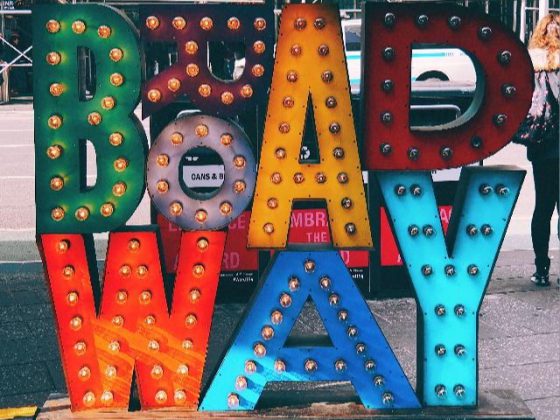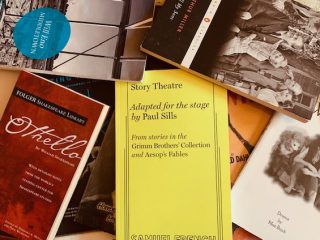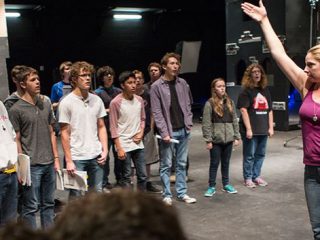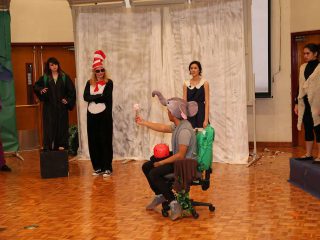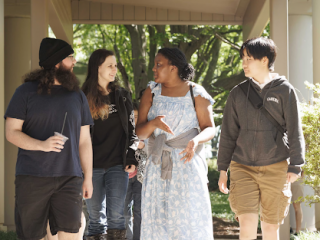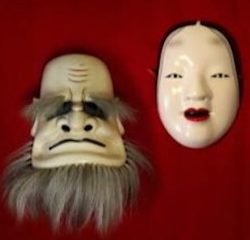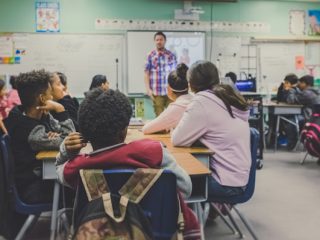It’s been more than a year since I started making theatre with kids in a pandemic. I would say, uhhh, I’ve navigated some moments better than others.
What did I do? How did it go? Where are we now? I present to you: a year of pandemic theatre with children.
MAY 2020: ALL ZOOM, BABY.
In May of 2020, I turned the beautiful student-written one-act that we’d been working on into a shortened Zoom version. I learned how to record via Zoom, the power of virtual backgrounds, and how hard it was to convince children that this medium was anything like getting to perform our show in person as planned.
In that first play, we were all struggling with the weight of our devastation. The loss of more than our productions, but also our typical freedoms, our normalcy. At the time, I wrote a whole different blog about those losses which you can read here.
So, I tried to turn the play into a video. I put painstaking energy and tons of time into edits that I hoped would make the show feel more important to the kids. Looking back, I’d say I did a dang good job on that 20-minute Zoom production. Unfortunately, it just didn’t hold the weight that our time together would have. It couldn’t. The kids showed up for me and for each other, but their hearts weren’t in it. They weren’t unappreciative, they were sad. And so was I.
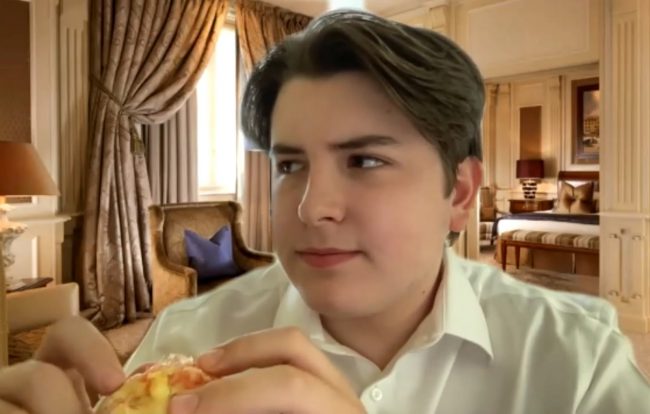
JULY 2020: FILMED IN PERSON
By July, my school was allowing small, socially distanced, masked summer camps in person. I went for it. Typically my camps end in a live performance for families, but audiences and gatherings weren’t really happening at that point.
Instead, I offered a movie-making camp. This allowed my attendees to be in person, write theatre together, play distanced games. Near the end of the camp, I began filming the scenes that they wrote, and pieced them together into a video that I released to the students and their families.
Obviously, the big challenge was setting clear boundaries and ensuring kids remained distant, but the rest of camp felt a lot like old times. There were a lot of successes. First and foremost, students knew the expectations from the beginning of the process. They didn’t lose a live show. Rather, they never emotionally planned for one. The camp was billed as a “Movie Makers” camp, so kids were excited to see their film; that was the whole point.
It allowed students a process, sent them home with a product, and didn’t force me to think about how to safely perform for an audience of people. I only had to worry about the 10 students in front of me every day. I’m likely to run camps the same way this summer.
DECEMBER 2020: LIVE…INDOOR…THEATRE? KINDA?
Our school was hybrid at the beginning of the year, which for us meant that the in-person students were divided between two cohorts. We decided to do a 10-minute play revue to keep things small and manageable–or so we thought.

We decided that we would have limited tickets available (only for families in the same households as the students involved.) Tickets had to be reserved in advance, none were sold at the door. As opposed to performing in a theatre (or outside in the middle of winter,) we spread audiences out in different classrooms on our campus. We made pre-assigned seating charts for attendees. The small plays (casts of 2-4 each), rotated through each room, performing their 10 minute show about 8 times in a night.
The logistics were mind-numbing. Our goal was to figure out how to make live theatre happen for our kids, and we did, but with so much to organize and figure out. We had little mini-shows that we rehearsed separately, keeping the bubbles small. We sanitized everything constantly. We kept actors 6 feet apart. Students supplied their own costumes. There were no shared props. Sets were tiny so that they could travel from room to room. The lighting was basic, the sound minimal. Each scene was assigned its own crew that moved set pieces and props from location to location.
There were a lot of challenges. Though we applied for rights well in advance, many of the 10-minute plays wouldn’t allow streaming rights, so we lost some shows, switched some shows. All students and audience members had to fill out daily health forms. Kids often had to attend rehearsals on Zoom when they weren’t feeling well. We were in a school where we did so much planning, had so much support and access to so many resources. We were in a situation of great privilege, and it was still some of the most challenging work of my career. Due to various reasons and protocols, several students ended up unable to attend the performance they worked on for months. We replaced actors with crew, then with faculty who were on-book.
It was…awful.
And the kids were so, so happy. They got to put on theatre in person. It wasn’t on a stage, it didn’t have full tech, they didn’t have wild costumes. The audience was small, their plays were small, some people were missing, and the whole process was fraught with uncertainty–but they were so, so happy.
It was worth it.
MAY 2021: OUTDOOR THEATRE+
Finally, a play in the spring. In a world where we can do some live theatre outdoors.
After our last rights/royalties debacle, we decided that playmaking is the way to go for our next show of the year. We crafted a couple of spooky plays that take place in a haunted hotel.
My co-director Alicia found a site for The Wandering Stage. Per their site, The Wandering Stage is:
“a 20 foot custom designed trailer that fully transforms into a full stage at the push of a button! By lowering an attached stage, traveling with wireless LED lighting, and a sound system that can run off a generator The Wandering Stage can transform any field, parking lot, or outdoor space into an ideal location for live music, theater, speeches, or any artistic event! We even offer a backstage area inside the trailer with two full dressing rooms!”

Working with them meant that the kids could do theatre outdoors, where it’s safer…but that we could also do a night show with lighting and sound. On a stage, even! Nate McNiff, who runs the company, allowed us to put set pieces and decorations on the stage. He was kind. He supplied professionals in the industry to teach our students how to use their equipment. They were kind too. It was exciting for student technicians to get to work with new people, and to see other ways in which theatre is happening in the world around them.
It was…a fully mounted production. It was the closest to our old performances that we’d seen in a year. Our technicians got to design a show again, run a board again. The actors performed with a stage under their feet. Our set designers learned new painting techniques. We did live theatre. We had fun. We felt that most excellent show energy in a way we hadn’t in so long.
The kids were masked and distanced. Sanitizer was everywhere. The audience was outdoors under blankets on a chilly night, spread three feet apart. And yet…it was like home. “It feels…almost normal,” a parent said. And maybe this is normal now.
SO WHAT NOW?
Each new attempt at creating theatre with students felt…more and more like the way it used to be. And yet, it is not what it used to be.
I’m not sure theatre can ever be what it was to me before the pandemic. Now…it’s even more. The pandemic has only magnified to me its importance. Through theatre, we teach collaboration, empathy, critical thinking, invention. It’s a showcase of our craft, but what’s more–it’s a showcase of our humanity.
We never lost our art, but were forced to reimagine and reinvent it. We learned to love the pieces of it we had, and work toward solutions to fill in the missing parts. We leaned on each other, we gave ourselves grace, and we made it happen.
Keep making it happen, everyone.
On to the next.


